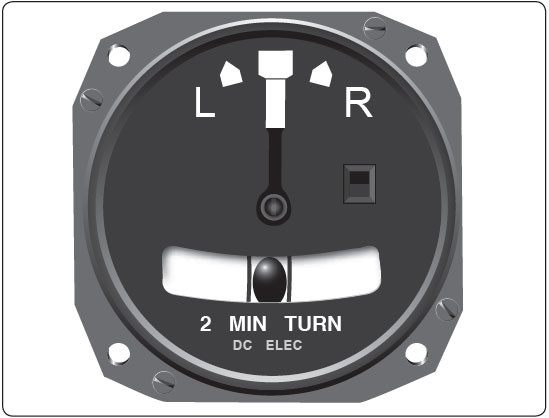The airspeed indicator tells the pilot the indicated airspeed in knots (or in some cases, a Mach number). Airspeed is sometimes also depicted in true airspeed, which is valuable information for flight planning. True airspeed is the actual speed of the airplane in relation to the air and is corrected for temperature and density effects. It's usually just a few knots different from indicated airspeed in small aircraft. In a nutshell, the airspeed indicator works by comparing ram (moving) air pressure from the pitot tube to static air pressure from one or more static ports. The diaphragm inside the instrument casing measures the pressure differential and depicts it on the instrument pointer. Airspeed indicators are color coded so the pilot can easily identify ranges such as the normal operating range (green), the flap operating range (white, in which flaps can be used safely), and caution range (yellow, in which it safe to fly only in calm air). The maximum speed is indicated by a red line.
The altimeter reflects the aircraft's vertical height above mean sea level (MSL) corrected for outside air pressure. The pilot sets the appropriate pressure setting (a local setting for those flying below 18,000 feet), and the altimeter will depict the corresponding altitude above MSL. The altimeter works similar to a basic barometer, by comparing the static pressure inside of a sealed aneroid capsule to the expanding or contracting pressure surrounding it. When the airplane ascends or descends, the air pressure will decrease or increase, respectively. This outside air pressure is constantly being compared to the pressure inside the aneroid capsule, and with the help of linkage and a pointer, the altitude is displayed on the cockpit instrument.
Vertical speed is the rate of the aircraft's climb or descent, usually depicted in feet per minute (FPM) on a vertical speed indicator (VSI). In level flight, the VSI needle points to 0 feet. The VSI works by measuring and comparing the static pressure inside of an expandable capsule to the metered static pressure outside of the capsule. The pressure inside the capsule changes very quickly as the plane climbs or descends, while the pressure outside of the capsule changes very slowly due to the metered leak. During climbs and descents, the capsule compresses or expands, respectively. The pressure difference is measured and linked to the pointer, where it's depicted on the instrument face. The VSI is valuable in determining whether the airplane is climbing or descending and the rate of the climb or descend. There can be a slight lag in information depicted on the VSI if the aircraft is maneuvered abruptly. In turbulence, the indications can be slightly erratic.



The attitude indicator is possibly the most important instrument for pilots. In one glance, a pilot can tell if the aircraft is climbing, descending, turning, or straight and level. It gives a direct indication of changes to pitch attitude (corresponding to the longitudinal axis of the plane's body) and bank attitude (corresponding to the latitudinal axis of the plane). The instrument is meant to depict the sky (usually blue in color) and the ground (typically brown), with a miniature airplane positioned on the artificial horizon (a white line) in level flight. In most cases, the miniature airplane is attached to the instrument viewing case, and it moves with the actual airplane. The artificial horizon remains suspended in relation to a self-erecting gyroscope, which holds its position in reference to the actual horizon.
A basic tool for navigation, the heading indicator provides directional information to the pilot similar to the way a magnetic compass does. As the aircraft turns left or right, the heading indicator will change to depict a new heading between zero and 359 degrees on a compass card. A miniature aircraft is located in the center of the indicator and turns with the airplane while the gyroscope (and coinciding linkage) turn the compass card on the instrument. In a left turn, the miniature airplane appears to turn left while the compass card turns right.
The turn coordinator is one of the simplest instruments, with a miniature airplane that dips its wings one way or another to show the rate of turn or rate of roll. When a pilot rolls the airplane into a turn, the miniature airplane quickly shows a corresponding roll. There are tick marks on the instrument that are calibrated to depict a standard rate turn for an airplane. (A 360-degree standard-rate turn takes two minutes.) The turn coordinator also includes an inclinometer, which is a ball suspended in a fluid that reacts like a pendulum during turning flight. The ball acts in response to gravity and turning forces and will depict a coordinated or uncoordinated turn. The pilot can then counteract an uncoordinated turn with the use of rudder movement, avoiding a slipping or skidding turn.


